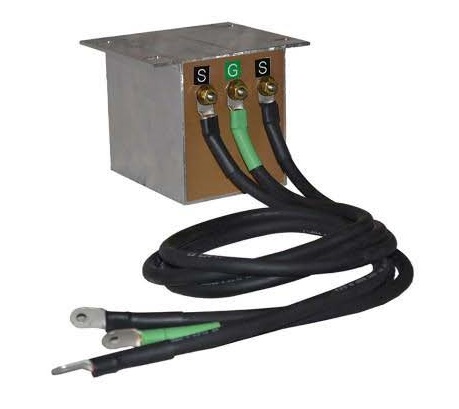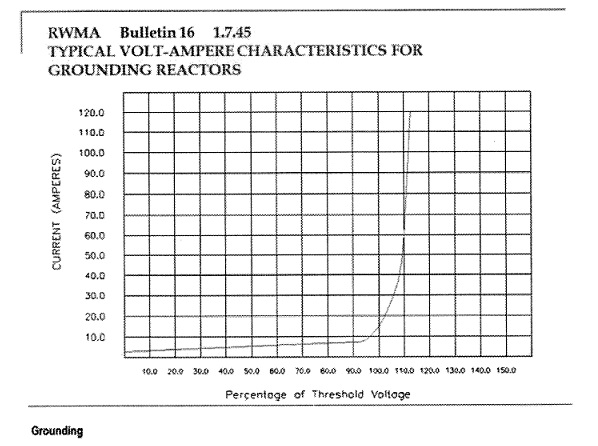A ground reactor is a safety device. It and direct grounding are the two methods of grounding a resistance welding machine. A ground reactor is used to detect over voltage in the secondary circuits of the resistance welding systems especially when direct grounding of the secondary circuits are not practical. A typical application would be a portable weld gun installation. Other applications could include robots, series welding or push-pull welding circuits in multispot welders.

GROUND REACTOR
The ground reactor is designed to react to any voltage in the secondary above a predetermined set safe voltage. If an unsafe voltage is detected the ground reactor becomes saturated and immediately provides the secondary a direct path to ground. The secondary current dumps to ground and trips the breaker or fuse at the buss. This ground reactor saturation is demonstrated by the graph below:

GROUND REACTOR % OF THRESHOLD VOLTAGE
The ground reactor can also be an aid when the standard ground wire is overheating and double grounding is not the cause. It could be that circulating ground currents are present. The ground reactors can detect and react to their presence and help eliminate the potential random poor welds these circulating currents can cause.
See:
WHY DOES THE RESISTANCE WELDERS HAVE 112V ON THE FRAME WHEN NOT CYCLING?
Contact your local distributor or machine builder for the proper method to ground new resistance welding equipment.
References: RWMA Resistance Welding Manual- 4th Edition
RWMA Bulletin 16
Roman Manufacturing Inc.

